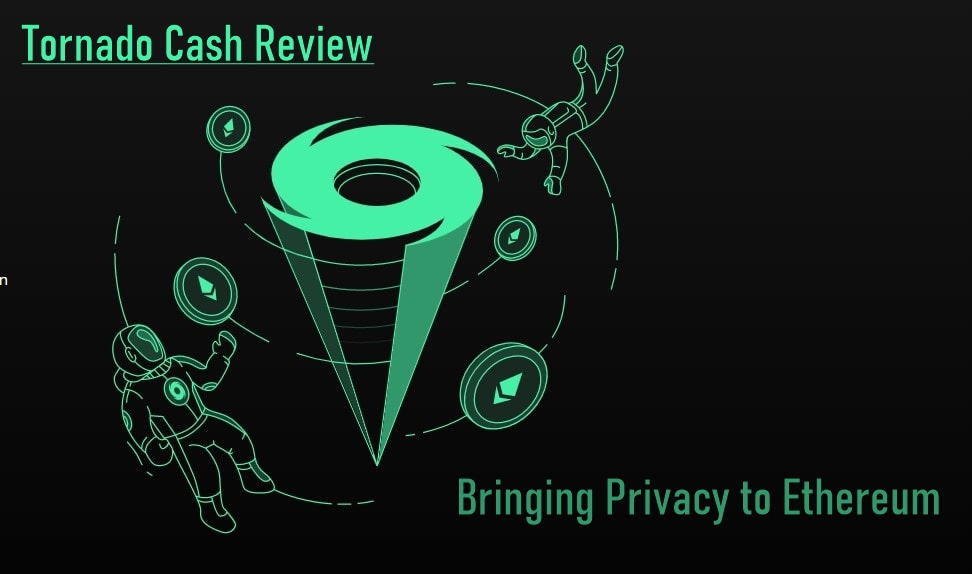
There’s a misconception out there concerning cryptocurrencies. For some reason many people have come to believe that blockchain transactions are private and anonymous, but for most blockchains nothing could be further from the truth. Rather than being anonymous, most (including the two largest – Bitcoin and Ethereum) are simply pseudonymous. They are completely public and visible, and while an individual address isn’t linked to a name publicly, it is often easy enough to determine the owner of a particular wallet address.
Tornado Cash is another solution aiming to solve the issue of privacy and anonymity on transparent public blockchains. While similar, it is not precisely a coin mixer in the same manner as solutions like Samourai because it works in a slightly different manner. In the end however the goal is the same – to keep your financial transactions private and anonymous.
About Tornado Cash
Tornado Cash is a privacy focused, decentralized non-custodial tool that is built on the Ethereum blockchain. It was created based off the open-source research done by the Zcash team, and the tool allows users to make their Ethereum or other ERC-20 tokens privatized by sending them through its smart contract service.
After sending a deposit to the Tornado Cash smart contract is can be withdrawn to a new Ethereum address. This process ensures that the withdrawn funds can’t be linked to the deposit source, thus ensuring the privacy and anonymity of the assets.
Unlike some other tools meant to create privacy the Tornado Cash protocol is fully owned and governed by its community. This was accomplished in May 2020, when the Tornado Cash development team relinquished control over the protocol’s multi-signature wallet in a Trusted Setup Ceremony. Following hat turn over the developers and even the founders have no control over Tornado Cash and it can be considered to be fully decentralized.
Other Privacy Protocol Alternatives
Tornado Cash isn’t the first attempt at privatizing Ethereum transactions. There have been a number of methods attempted that include custodial mixing services, centralized exchange wallets, and obscuring value flows. The problem is that all of these solutions have introduced some degree of surveillance risk, ultimately making them unsuitable as a privacy solution. And none ever reached the level of privacy and anonymity that’s provided by coins like Monero and Zcash.
As one of the first privacy coins created, Zcash is the basis for many new projects, including Tornado Cash. Zcash uses a number of cryptography solutions, including Zero-Knowledge Proofs. In Monero a multiple-key system that uses “view” and “spend” keys with public and private versions introduces privacy. Monero also includes three segments of cryptography to hide its transactional components from public view.
Anonymity Set
The Anonymity Set in Tornado Cash is there to show the deposits that are sitting in the smart contract and awaiting withdrawal. It will also show how many deposits can be accessed when performing a withdrawal. This also introduces two options for the withdrawal process:
1. You can use a wallet like MetaMask, in which case you’ll need a new address that also contains some ETH. The quandary here is how to add ETH to a new address without giving up your privacy.
2. You can use the Tornado Cash Relayer together with a new Ethereum address to maintain complete privacy and anonymity.
Tornado Cash Relayers
The Relayer allows you to withdraw to any address, even those with no ETH. By using a new address to withdraw it means there is no way to link the withdrawal to any specific deposit. So there is no longer a trail to follow leading back to any addresses that might be linked to you. Plus the developers have no control over the Relayer so they are unable to make any alteration to the withdrawal data.
On-Chain Versus Network Anonymity
Users of Tornado Cash need to remain aware that the tool is only a solution to on-chain privacy. That’s a great start to privacy, but users still need to follow the best network level practices if they want to keep their data completely private.
Even when using the Relayer it is necessary to use a VPN, a proxy, or Tor to hide your IP address. It can also be useful to enable Incognito Tab features on your browser. Also be sure to clear all your cookies that may be stored by any dApps you’ve used. This is done to prevent the dApp from using the cookies to make an association between your old address and the new address.
Tornado Cash Team
Tornado Cash was created with a driving principle of people deserving privacy as a basic human right. The founders believe that the more people who adopt this as their philosophy, the more secure life will become for each and every one of us.
The development of Tornado Cash was funded by PepperSec, consulting agency for security audits and custom development. The CEO of PepperSec is Alexey Pertsev, however he isn’t listed as being connected with the development of Tornado Cash. The two co-founders of Tornado Cash are Roman Storm and Roman Semenov. They are also the founders of the aforementioned PepperSec.
Final Words
We can be thankful that Tornado Cash exists to help preserve privacy. At the same time, until the service gains more traction the anonymity it provides can sometimes be less than ideal. The service relies on a large number of incoming transactions for its Anonymity Set to work properly. Fortunately, usage has been growing, and as of June 2021 Tornado Cash has processed over 65,000 deposits and more than 1.5 million ETH. That’s a good sign for the future growth of the project.



















